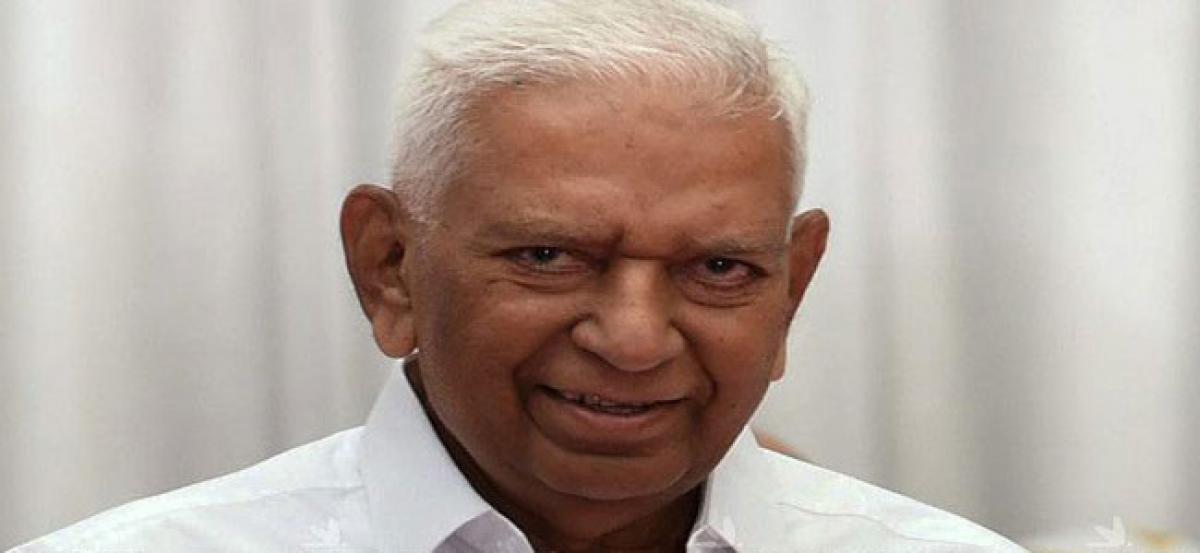Live
- Naidu pats TDP leaders, cadres for enrolling 73L members
- Rupali Ganguly says for 20 years she never got an award
- Advanced anti-drone systems deployed for devotees’ safety at Mahakumbh
- Workshop on ‘Industry-Academia Practices in Civil Engineering’ concludes
- Revanth assures Kurma community of its due
- 204 cadets pass out of AFA
- Youngest chess king wins laurels for India
- FairPoint: Rahul’s rhetoric falls flat as PM Modi steals spotlight
- Notice issued to SGPC chief Dhami
- PM Surya Ghar scheme set to surpass a decade’s installation growth in a year
Just In
Karnataka Governor's first invite to form the new government


Karnataka Governor Valubhai Vala’s first invite to form the new government is highly awaited. With a tally of 104, the BJP is the single-largest party while the Congress-JD(S) post-poll alliance has 116 seats between them.
Karnataka Governor Valubhai Vala’s first invite to form the new government is highly awaited. With a tally of 104, the BJP is the single-largest party while the Congress-JD(S) post-poll alliance has 116 seats between them.
The advantage lies with the party or coalition that is invited first in matters of government formation.
Previously, after the Goa and Manipur elections, Congress argued that the single-largest party should be invited first. The party got the most seats but the BJP formed a government in coalition with regional parties during those elections.
Now, BJP has the same argument to withhold that it is the single-largest party.
While opinions suggest that the single-largest party should be invited first and asked to prove its majority on the floor of the House within a short period of time and if it fails to do so, the next largest party, or a coalition, should be invited.
However, the Supreme Court in 2006 ruled that the Governor has to invite any party or alliance, to form a government once he is satisfied that it commands majority support in the assembly.
According to the Justice R S Sarkaria Commission, the Governor is given the suggestion on giving the leader of the single largest party precedence over the leader of the post-poll coalition partners.
In its recommendations on the role of governor, the Sarkaria Commission, which reviewed the working of arrangements between the Union and the states says that the governor should select a chief minister from among the following parties or group of parties if there is no single party having an absolute majority in the Assembly in order as indicated below.
-An alliance of parties formed prior to the elections;
-The largest single party staking a claim to form the government
-A post-electoral coalition of parties, with all the partners in the coalition joining the government
-A post-electoral alliance of parties, with some of the parties in the alliance forming a government and the remaining parties, supporting the government from outside.

© 2024 Hyderabad Media House Limited/The Hans India. All rights reserved. Powered by hocalwire.com






